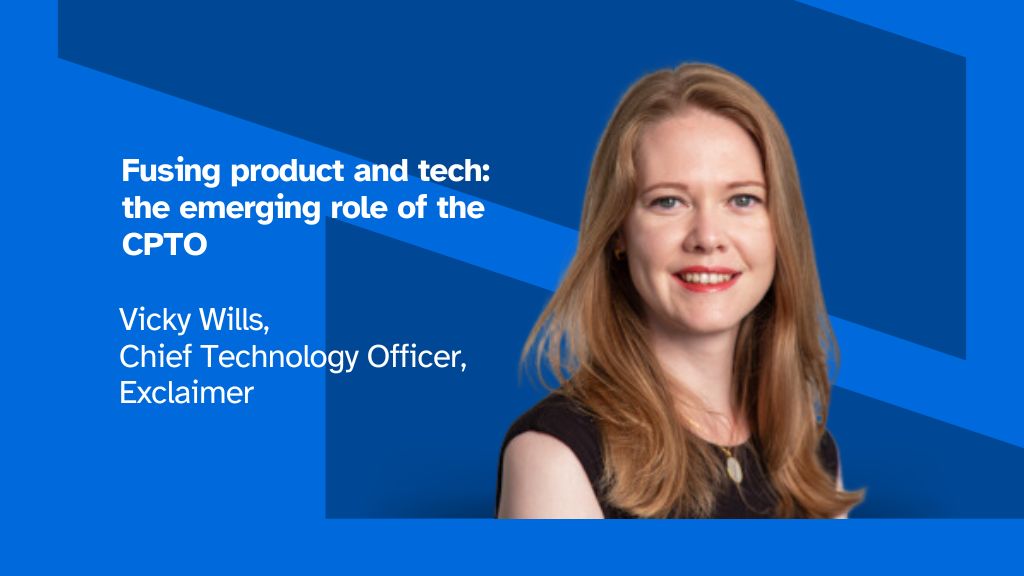By Vicky Wills, Chief Technology Officer, Exclaimer
The evolving nature of business and leadership has led to a challenging debate about whether technology and product departments should be integrated or operate independently. This comes on the heels of an estimated £85bn productivity gap in the UK—a strong incentive for leaders to streamline operations and fuse teams for improved innovation, communication and results. While the chief technology officer (CTO) and chief product officer (CPO) roles require distinct expertise, some businesses are combining both into a ‘CPTO’ role for better results.
The decision between maintaining individual, departmental leaders or merging these roles is determined by the maturity of the company and wider business goals. Ultimately the success of either approach depends on keeping the organisation’s goals and growth stage at the forefront of the decision-making process.
Unpacking the CTO and the CPO roles
Technology and product departments often represent the least understood areas within a business, despite their substantial investments. A report from McKinsey found that companies that align their product and technology strategies see up to a 20% increase in efficiency. Disconnects can lead to inefficiencies and have a knock-on effect for the wider organisation, hence some companies prefer to merge the CTO and CPO roles. However, each role carries distinct responsibilities that are critical to the business.
The CTO’s main duty is to ensure the organisation’s technology infrastructure is scalable, reliable, and efficient, aligning with company growth and employee needs. This extends beyond coding and system implementation; the CTO must also lead and make strategic decisions that support broader business goals, striking a balance between meeting internal needs and priming the business for growth and development with the right tech investments.
In parallel, the CPO is responsible for customer-centric innovation and bridging the gap between product vision and customer value. They focus on adding value to the existing product or service and distinguishing it from competitor offerings. The CPO is also instrumental for future-proofing products, keeping ahead of industry developments and taking them into account for the wider product strategy. A successful CPO combines innovation with keen market insight, driving the product forward in a competitive landscape.
Individual, or connected leaders?
Not all organisations need two separate leaders for technology or product. Smaller companies in early growth stages, or larger companies where these functions are well established, can benefit from one unified leader. Both the CTO and CPO are responsible for business growth, enhancing the organisation’s commercial performance, and translating company initiatives into ROI–which is where the two roles can merge into one. A CPTO manages integrated responsibilities—one day could be spent focusing on the product roadmap, and then the next could pivot to optimise hosting costs. This approach not only streamlines processes and implements the right tech providing a cohesive vision for product strategies but also cost advantages and simplifies organisational structure.
Having a single point of contact for research and development is particularly effective in environments where product and technology are closely integrated (i.e., technology and SaaS companies). However, the CPTO role comes with its challenges, such as not having a counterpart to challenge individual perspectives. This can be resolved by engaging with senior business stakeholders across the organisation to sound out ideas and working closely with the technology leadership team.
Alternatively, having a CTO can benefit scaling organisations that are starting to encounter challenges with the company’s technical stability, developer productivity, or data capabilities. These are all examples of challenges that come with growth. A technology leader can consolidate this area of the business by addressing challenges or pain points surrounding
the company tech stack.
Similarly, once a business has achieved product market fit, a CPO can supercharge the future of the product, in terms of both development and strategic direction. By leveraging sophisticated market insight to understand customer desires and needs the CPO can ensure the product remains competitive and meets market demands.
Striking a balance
Ultimately, the decision to merge or separate product and technology leadership roles depends on a company’s specific needs, maturity, and strategic objectives. For some, having distinct CPO and CTO roles provides clarity and focus. For others, a unified leader offers a simplified structure and a cohesive vision that can n drive both innovation and efficiency. Nonetheless, organisations must remain vigilant about potential downsides, particularly the risk of overloading one individual with too many responsibilities.
As businesses grow and evolve, it’s imperative to continuously evaluate the leadership structure to ensure it meets strategic goals. This balance becomes particularly critical when roles are combined, as the scope of responsibilities must be carefully managed. Whether an organisation opts for one role or two, product and technology efforts must align with the broader business strategy. This is crucial for effectively driving growth and delivering exceptional value to customers.












